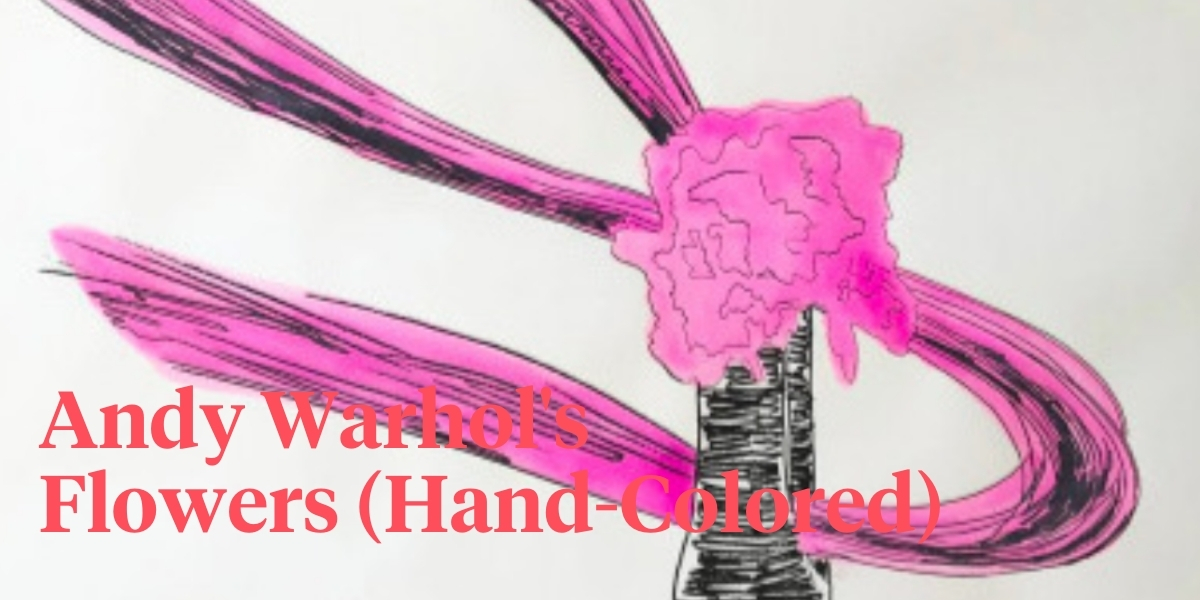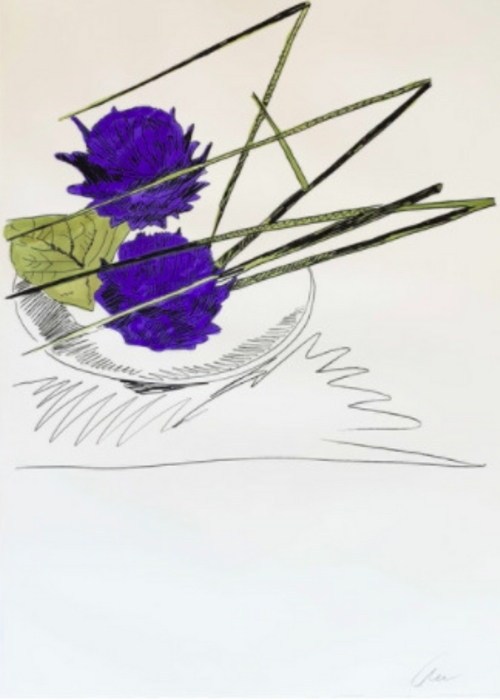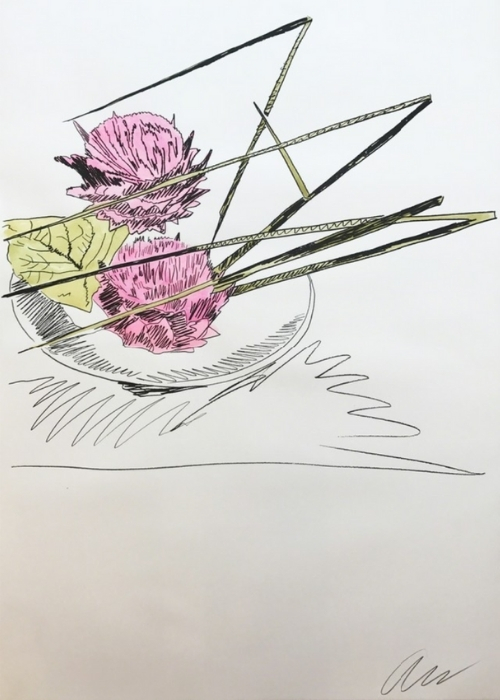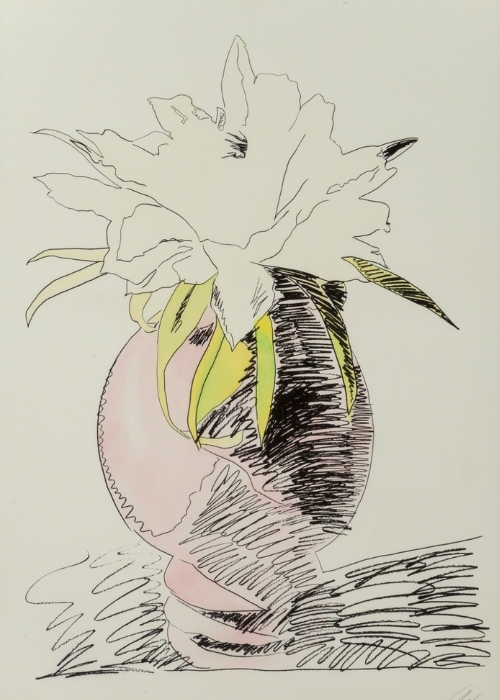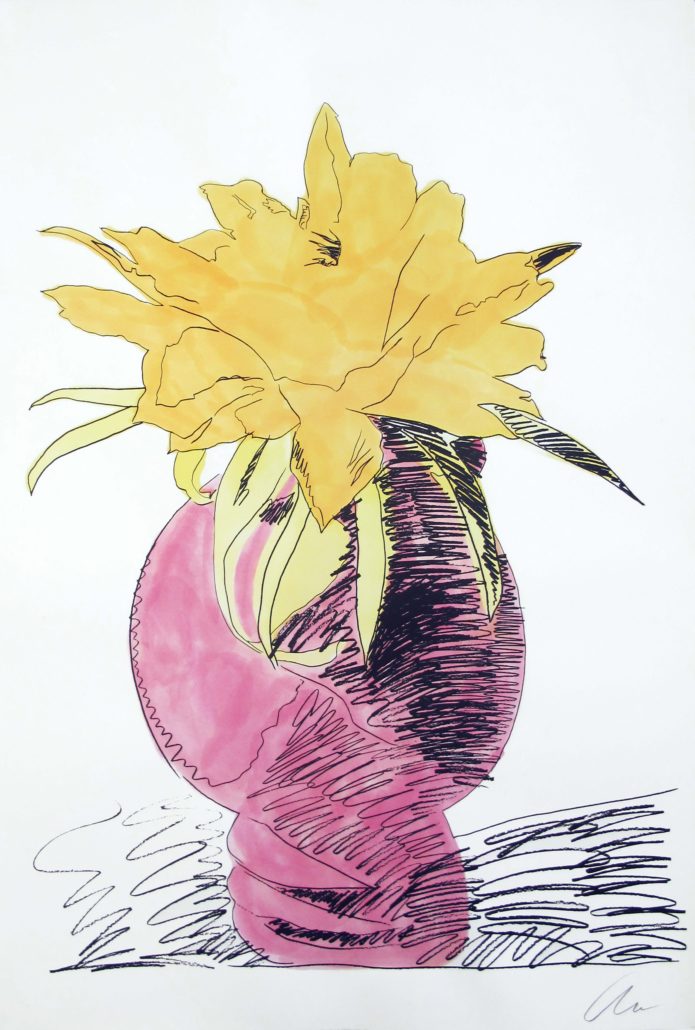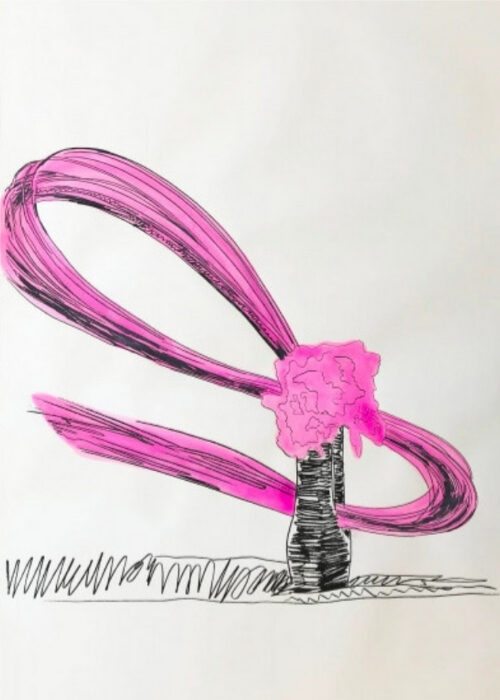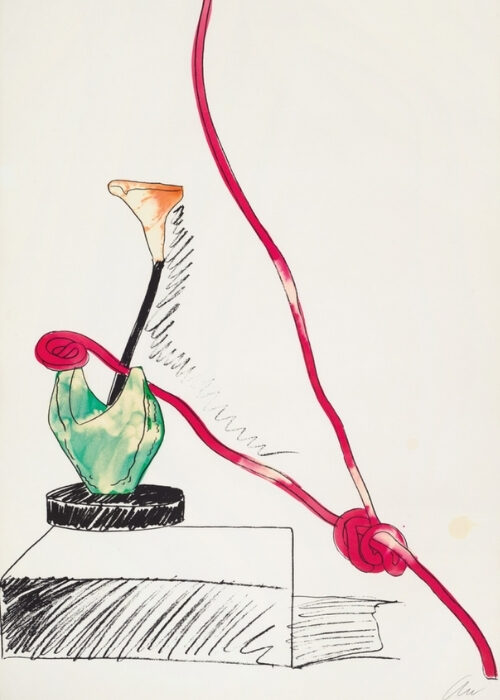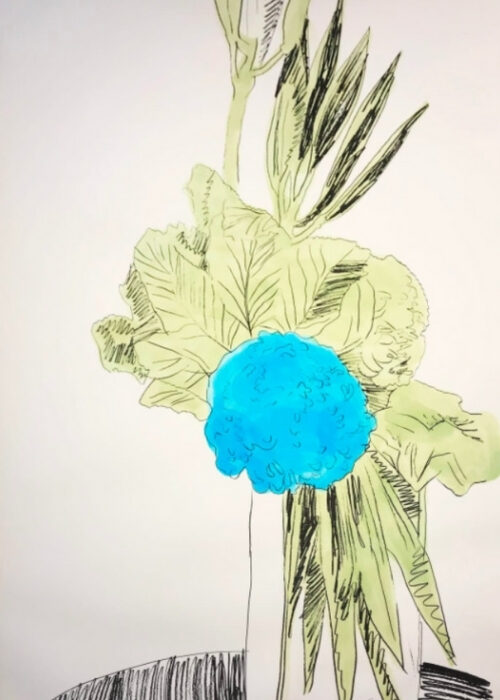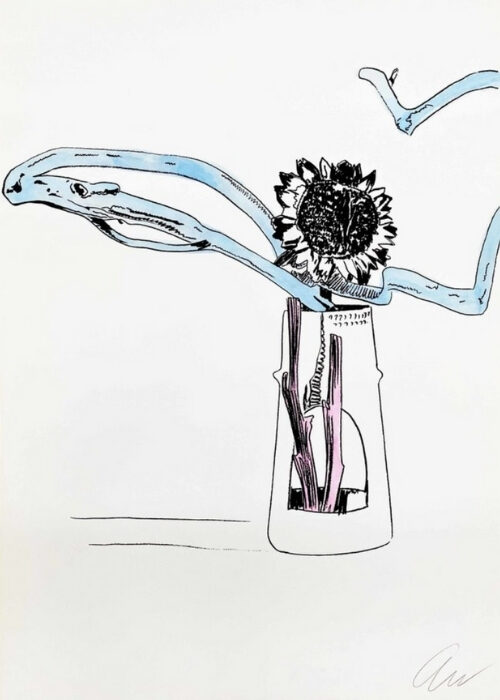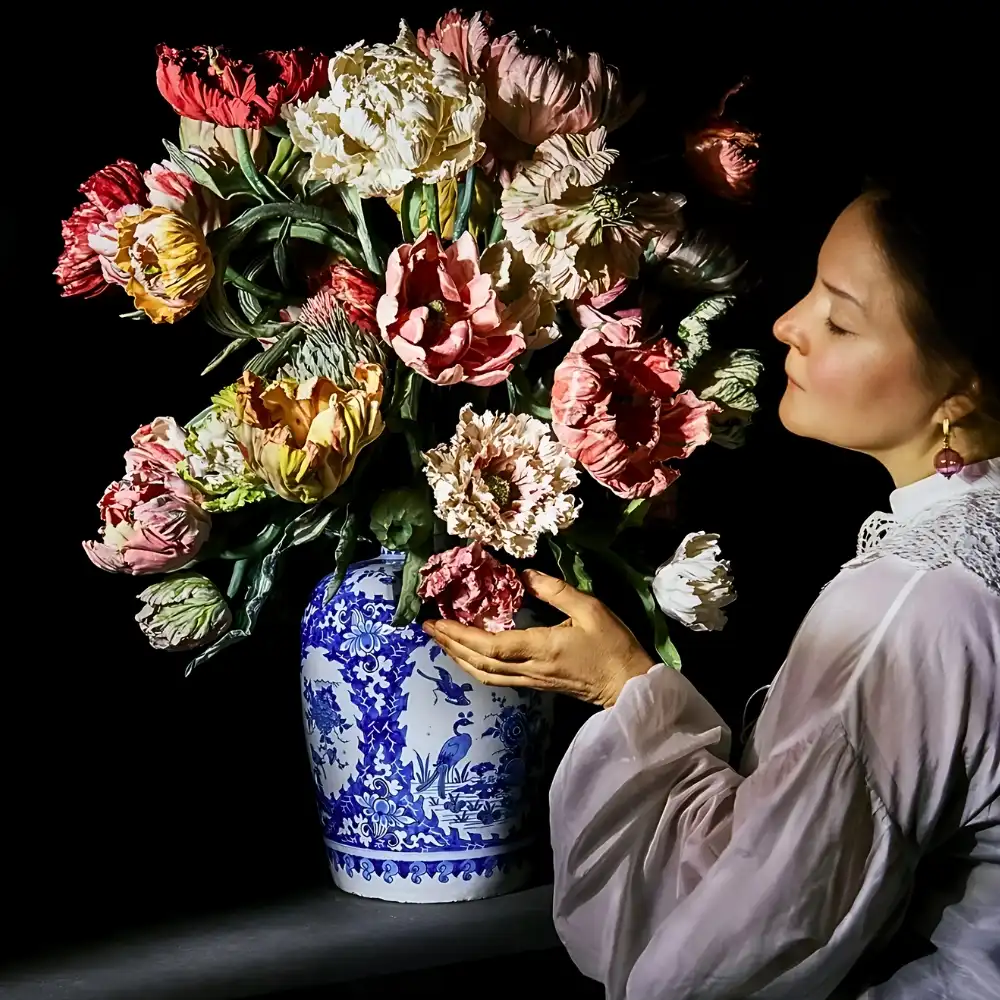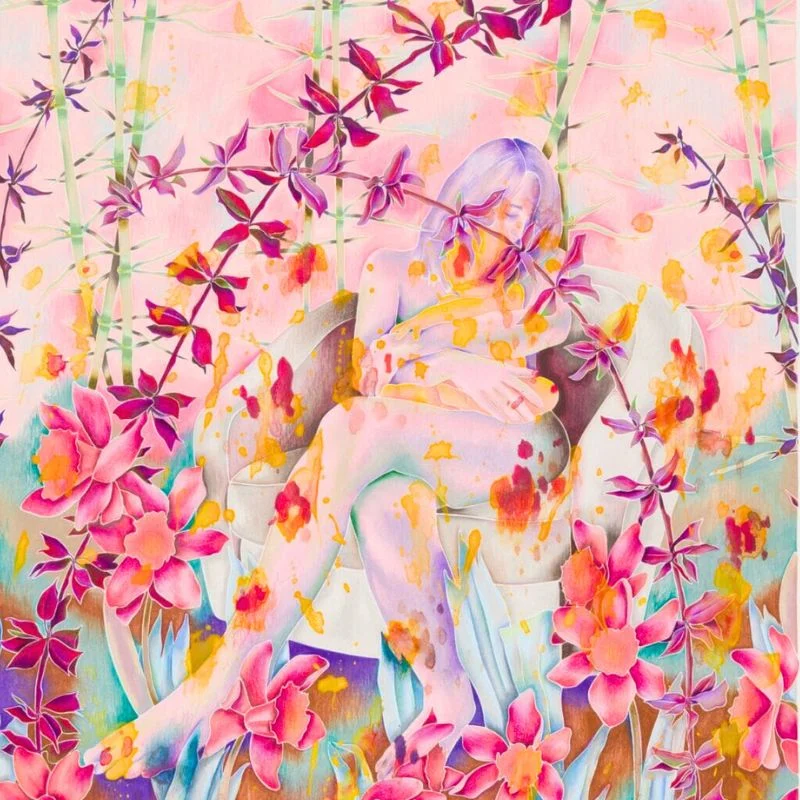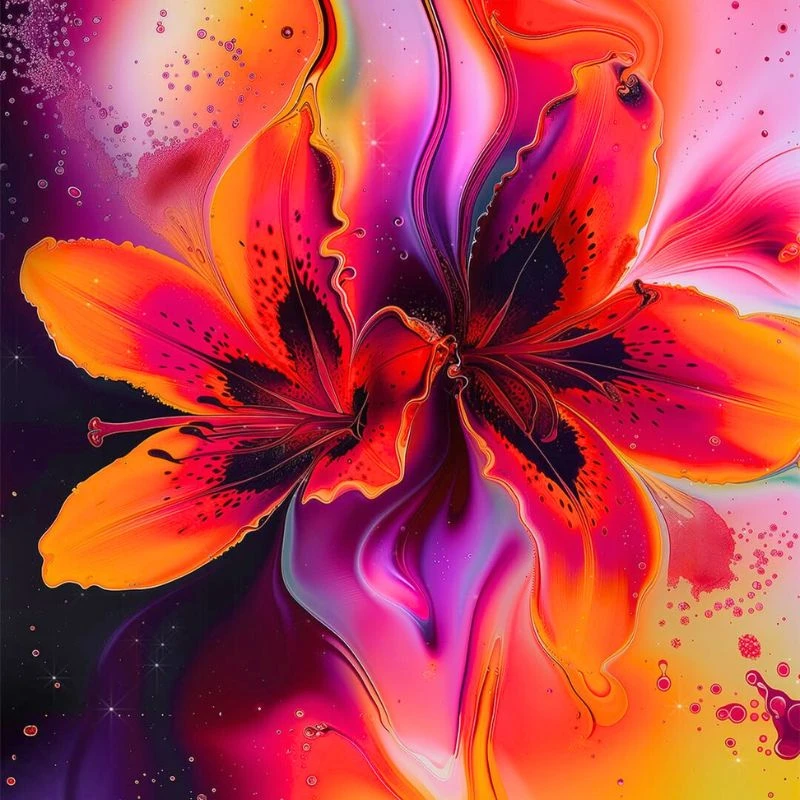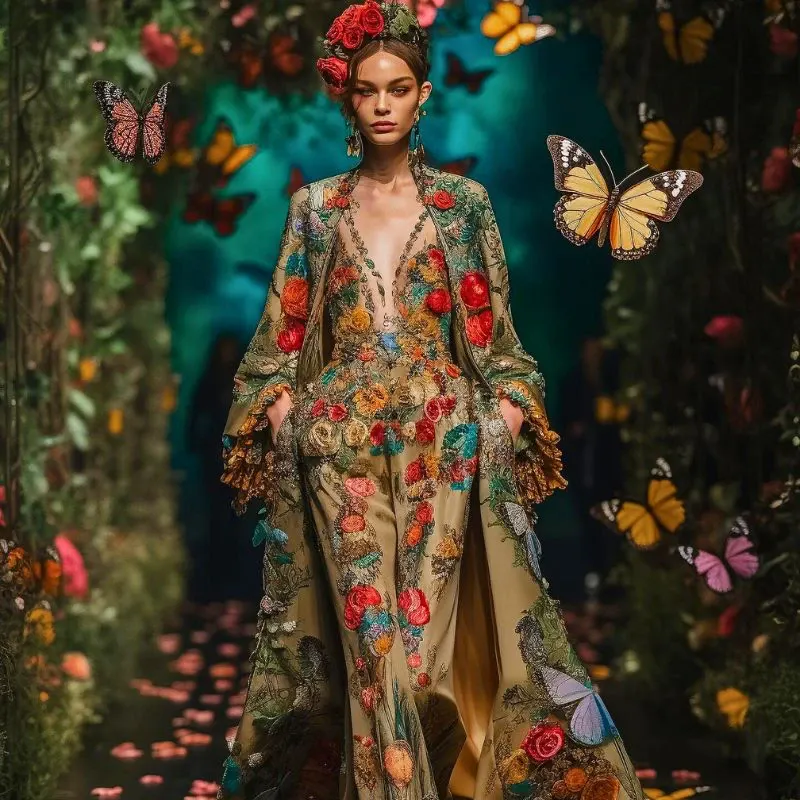Andy Warhol, a leading figure in the Pop Art movement, is best known for his bold, iconic images of everyday objects and popular culture. Born in Pittsburgh, Pennsylvania, in 1928, Warhol's prolific career spanned various mediums, including painting, printmaking, sculpture, and film. While he gained immense fame for works such as Campbell's Soup Cans and Marilyn Diptych, Warhol's 1974 hand-colored series called Flowers deserves equal recognition for its beauty, simplicity, and exploration of the artistic process.
Andy Warhol's First Venture Into the Realm of Flora
The 'Flowers' series was not Warhol's first venture into the realm of flora. In 1964, he created a set of ten screenprints featuring brightly colored flowers set against a vibrant backdrop, which quickly gained popularity for their striking simplicity and cheerful nature. However, the 1974 Flowers series marked a significant departure from Warhol's earlier works, showcasing a more delicate, handcrafted approach to his art.
Inspired by a photograph taken by the nature photographer Patricia Caulfield, Warhol set out to create a new series of flower prints, focusing on the hibiscus flower. Using the silkscreen printing method, Warhol printed the outline of the flower onto paper, then painstakingly added layers of watercolor to each print by hand. The resulting images are a stunning blend of mechanical reproduction and individual artistic expression.
The hand-colored technique employed in the 1974 Flowers series allowed for a greater range of variation and experimentation. In contrast to the uniformity of his earlier screenprints, the hand-coloring process imbued each work with a unique character. This departure from the mass-produced aesthetic typically associated with Warhol's art highlights his versatility and willingness to challenge the boundaries of his own practice.
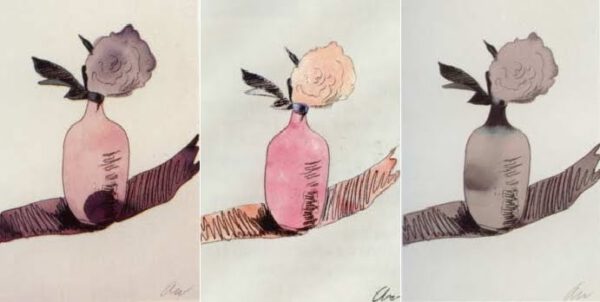
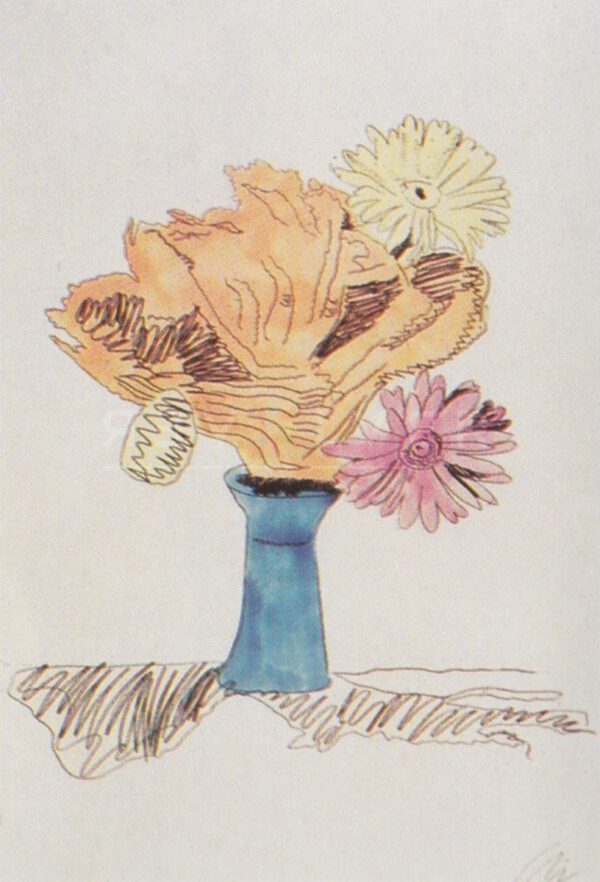
Andy Warhol's Choice of Colors
The 1974 Flowers series is characterized by its bright, saturated colors, which infuse each piece with a sense of vitality and exuberance. Warhol's choice of colors, including vivid reds, oranges, yellows, and pinks, evokes the energy and optimism of the Pop Art movement, while the softness of the watercolors adds a subtle, painterly quality to the prints.
Each piece in the series features a single hibiscus flower, its petals folding and twisting in various directions, creating a sense of movement and depth. The organic, sinuous lines of the petals contrast sharply with the flat, geometric shapes typically seen in Warhol's work, offering a glimpse into his ability to adapt his style to the different subject matter.
The flowers in the series are set against a plain, monochromatic background, which serves to emphasize the vibrancy of the colors and the intricate details of the petals. This stark contrast underscores Warhol's ability to distill his subjects down to their most essential elements, amplifying their beauty and impact.
The 1974 Flowers Series at First Glance
At first glance, the subject matter of the 1974 Flowers series may seem incongruous with the themes and motifs commonly associated with Pop Art. However, the choice to depict flowers, a symbol of beauty, fragility, and the transient nature of life, speaks to Warhol's ability to find meaning and resonance in seemingly mundane subjects.
The flowers can also be seen as a response to the growing environmental movement of the time, with their bold colors and organic forms serving as a celebration of the natural world. The series represents a subtle shift in Warhol's focus, moving away from the mass-produced, consumer-driven culture of the 1960s and toward a more contemplative, introspective examination of the world around him.
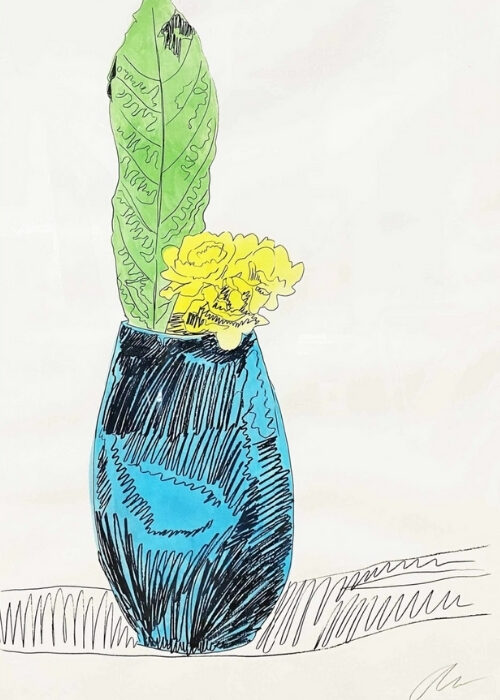
A Testament to Warhol’s Mastery of Color
Although the 1974 Flowers series may not be as instantly recognizable as some of Warhol's other works, it has left an indelible mark on the art world. The series has inspired generations of artists to explore the intersections between popular culture, nature, and artistic expression, pushing the boundaries of traditional artistic mediums.
Andy Warhol in Major Art Studios Worldwide
Today, the Flowers series can be found in major art institutions worldwide, including the Museum of Modern Art in New York, the Tate Modern in London, and the National Gallery of Australia in Canberra. The enduring popularity of these works is a testament to their timeless appeal and the power of Warhol's vision.

